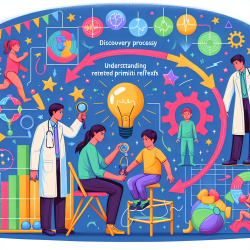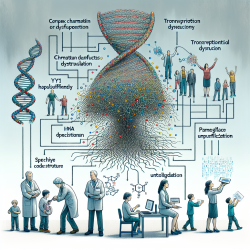Introduction
In the realm of healthcare, data-driven decision-making is crucial for improving patient outcomes. This principle is particularly important in managing chronic conditions such as hypertension, where adherence to clinical guidelines can significantly impact patient health. A recent study titled "Barriers to Optimal Clinician Guideline Adherence in the Management of Markedly Elevated Blood Pressure: A Qualitative Content Analysis of Electronic Health Records" sheds light on the barriers clinicians face in adhering to these guidelines.
Understanding the Study
The study, conducted by researchers at Yale New Haven Hospital, analyzed electronic health records (EHRs) to identify scenarios of suboptimal adherence to hypertension management guidelines. The research focused on patients with markedly elevated blood pressure, defined as two consecutive readings of systolic BP ≥160 mmHg or diastolic BP ≥100 mmHg, without a prescription for antihypertensive medication within 90 days of the second reading.
Key Findings
The study identified three main content domains contributing to suboptimal guideline adherence:
- Clinician-related scenarios: These include neglect and diffusion of responsibility, where clinicians either overlook the need for intervention or defer responsibility to other providers.
- Patient-related scenarios: Factors such as patient non-adherence to prescribed treatments and patient preferences can hinder guideline adherence.
- Clinical complexity-related scenarios: Diagnostic uncertainties, maintenance of current interventions, and competing medical priorities often complicate decision-making.
Influencing Factors
The study also identified several influencing factors that contribute to these scenarios:
- Organizational factors: Lack of clear protocols, excessive workload, and time constraints can impede adherence.
- Professional factors: Clinician beliefs about their roles and the perceived restrictiveness of guidelines can affect decision-making.
- Patient factors: Patient awareness, motivation, and adherence to treatment plans play a significant role.
- Guideline factors: The clarity and applicability of guidelines can impact their adoption.
Implications for Practice
For practitioners, understanding these barriers and influencing factors is crucial for improving adherence to hypertension management guidelines. By addressing these challenges, healthcare systems can implement targeted interventions to enhance guideline adherence and improve patient outcomes. Strategies may include:
- Developing clear protocols and processes to define roles and responsibilities.
- Implementing evidence-based decision support tools within EHR systems.
- Enhancing patient education and communication to improve adherence.
- Tailoring guidelines to local contexts and involving end-users in their development.
Conclusion
This study provides valuable insights into the barriers to clinician guideline adherence in managing markedly elevated blood pressure. By understanding and addressing these barriers, practitioners can improve their adherence to guidelines, ultimately leading to better patient outcomes. For those interested in delving deeper into this research, I encourage you to explore the original study.
To read the original research paper, please follow this link: Barriers to Optimal Clinician Guideline Adherence in the Management of Markedly Elevated Blood Pressure: A Qualitative Content Analysis of Electronic Health Records.










